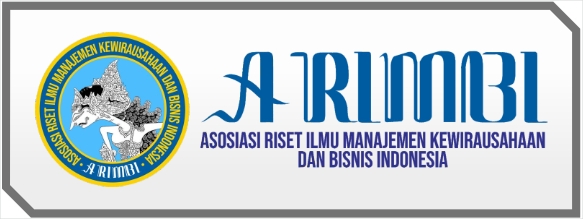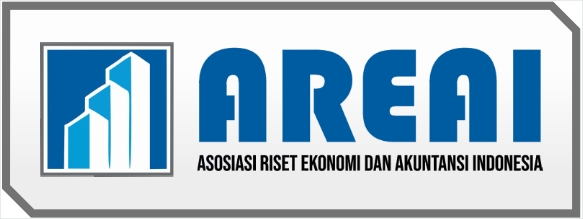The Analysis Of Liquidity Ratio For Civil Service Cooperative Ao' Gading PGRI Ranting Balusu North Toraja Regency
DOI:
https://doi.org/10.55606/iceb.v1i2.115Keywords:
Financial Performance, Liquidity RatioAbstract
This research aims to examine the liquidity ratio at the Ao' Gading Civil Servant Cooperative PGRI Ranting Balusu in the North Toraja Regency. This research's data analysis technique is the analysis of the liquidity ratio, which consists of the current ratio and the cash ratio .In 2018, the current ratio was calculated to be 3.51 %; in 2019, it was calculated to be 3.41 %; and in 2020, it was calculated to be 3.31 %. In 2018, the cash ratio was calculated to be 0.71 %, while in 2019 and 2020, it was calculated to be 1.04 % and 1.20 %, respectively. According to the rules set forth by the State Minister for Cooperatives and SMEs of the Republic of Indonesia, the Ao' Gading PGRI Ranting Balusu, North Toraja Regency, current ratio calculation findings indicate that it is not good, According to the decree of the State Minister for Cooperatives and UKM of the Republic of Indonesia, Number 06/M/KUKM/2006, dated May 1, 2006, and the outcomes of the cash ratio calculation at Ao' Gading PGRI Ranting Balusu, North Toraja Regency, they are classified as not good. According to the assessment requirements of the Indonesian Ministry of Cooperatives and UKM, the liquidity of the Ao' Gading PGRI Ranting Balusu Civil Servant Cooperative is rated as poor based on the study conducted with several liquidity ratio formulas, Number 06/M/KUKM/2006 does not mean that it is illiquid but the cooperative does not optimize its current assets because its cash is still too small compared to its receivables even though its current assets are greater than its current liabilities.
References
Arikunto, Suharsmi. 2013. Research Procedures of a Practical Approach. Jakarta: PT. Rineka Cipta.
Asoka, Rano. 2018. Liquidity Analysis in The MenilaI of Cooperative Financial Performance. Rahmaniyah Scientific Journal of Accounting Vol. 2/ No.1 (pages 82-91) /December 2018
Darsono. 2012. Practical Guidelines for Understanding Financial Statements. First edition. Andi: Yogyakarta.
Fahmi, Irham.2017. Financial Performance Analysis. Alphabet. Bandung.
Hendrojogi.2015. Cooperatives: Principles, Theory and Practice. Jakarta: PT. King Grafindo Persada.
Hery. 2014. Analysis of Financial Statements. PT Bumi Aksara. Jakarta.
Jayusman, Iyus and Shavab, Oka Agus Kurniawan.2020. Quantitative Descriptive Study of Student Learning Activities Using Edmodo Learning Media in History Learning Journal of Artifacts Vol. 7./ No. 1 (pp. 13-20)/ April 2020.
Jumingan. 2014. Analysis of Financial Statements. First Printing. Yogyakarta: Bumi Aksara
Cashmere, 2016. Financial Statement Analysis . Jakarta: PT Raja Grafindo Persada.
............... 2019. Introduction to Financial Management. Prenamedia Group. Jakarta.
Karyoto. 2017. Financial Statement Analysis. UB Press. Malang.
Lubis, Grace Hidayat. 2017. How to Prepare Financial Statements of Service Companies. C.V ANDI OFFSET. Yogyakarta.
Pariyanti, Eka and Zein, Rafika. 2018. Analysis of Financial Performance in Savings and Loans Cooperatives and Sharia Financing BMT Commensurate, Pasir Sakti District, East Lampung. Scientific Journal of Finance and Banking Vol.2/ No. 2/November 2018.
Regulation of the State Minister of Cooperatives and Small and Medium Enterprises of the Republic of Indonesia, Number 06/per/M.KUKM/V/2006 dated May 1, 2006
Regulation of the State Minister of Cooperatives and Small and Medium Enterprises of the Republic of Indonesia, Number 14/Per/M.UMKM/V/2006
Pujiyono.2015. Cooperative Law in History in Indonesia. Surakart: Cv. Indotama Solo.
Prastowo, Dwi.2015. Concept Financial Statement Analysis. The third edition. Yogyakarta
Rahma, Nur Mutiara and Komariah, Euis. 2016. Analysis of Financial Statements in Assessing the Financial Performance of the Cement Industry Listed on the IDX (Case Study of PT Indocement Tunggal Prakarsa Tbk). Online Journal of Accountants Vol.1. No. 1 (pages 43-58). East Bekasi: Bina Insani Accounting Academy.
Ropcke, J. 2012, Cooperative Economics: Theory and Management, Graha Ilmu, Yogyakarta.
Samryn, 2015. Introduction to Accounting: Book 2 Accounting Methods for Financial Statement Elements Enriched With IFRS And Banking Perspectives.Jakarta: Rajawali Pers.
Sandra, Eli. Et al.2018. Liquidity Ratio Analysis to Measure Financial Performance in Civil Service Cooperatives of Halu Oleo Kendari University . UHO Business Journal Vol.3/No. 2 (pages 192-203). Kendari/July/2018.
Siagian, Raven Pardomuan and Pangemanan, Sifrid S.2016. Analysis of The Financial Report in assesing the Financial Performance of the Cement Industry Listed on the IDX (Case Study of PT Indocement Tunggal Prakarsa Tbk). Online Journal of Accountants Vol.1. No. 1 (pages 43-8). East Bekasi: Bina Insani Accounting Academy.
Soraya, Olivia's Empress. 2019. Analysis of Liquidity Ratio to Measure Financial Performance in PT. Indexim Utama Banjarmasin. Diss. Islamic University of Kalimantan.
Sugiyarso, Gervasius. 2011. Cooperative Accounting: Systems, Methods, and Analysis of Financial Statements. CAPS, Yogyakarta.
Sugiyono. 2012. Quantitative Research Methods, and R&D. Bandung Alphabet.
Tangdiarrang, Adelia.2021. Liquidity Analysis at the Marendeng Savings and Loan Cooperative, Rantepao Branch , Tallunglipu District.
Wardani, Ninda Riza Furi.et al.2019. Financial Ratio Analysis to Assess Financial PerformMance in Primary Cooperative Darma Putra Uddhata Jamber 2015-2017. Journal of Economic Education Vol.13/No.1/2019
















